No two school brand narratives are exactly the same but almost all of them, when broken down into their fundamental logic, fall within a handful of argument structures. Get it right and your school’s brand story gains clarity and traction.
Get it wrong and, well …
The brand narrative that you choose for your school is a critical element in the effectiveness and efficiency of your marketing.
From imageseven’s work with schools, we have identified seven different brand narratives. This list isn’t necessarily exhaustive, but it may give you some clues as to why your brand narrative is not performing as well as expected.
1. The best of both worlds
This is a classic school brand narrative. You give families the benefits of two solutions combined. This means they do not have to compromise.
Here’s the logic progression:
- Parents used to have to choose between school A and school B.
- School A would give you one set of benefits.
- School B would give you a different set of benefits.
- But what if a school could give you the benefits of A and B?
- Meet [insert your school], the only way to get the benefits of both A and B for your child.
If it can be substantiated, this is a strong and low risk brand narrative. But it can tempt school marketers to try to cram every benefit into every marketing communication. This results in an unappetising list of benefits where your prospect is forced to do the hard work of comparison for themselves.
Another temptation is to inadvertently criticise the ‘other schools’ (school A and school B), which is never a good idea. Keep it to generic categories.
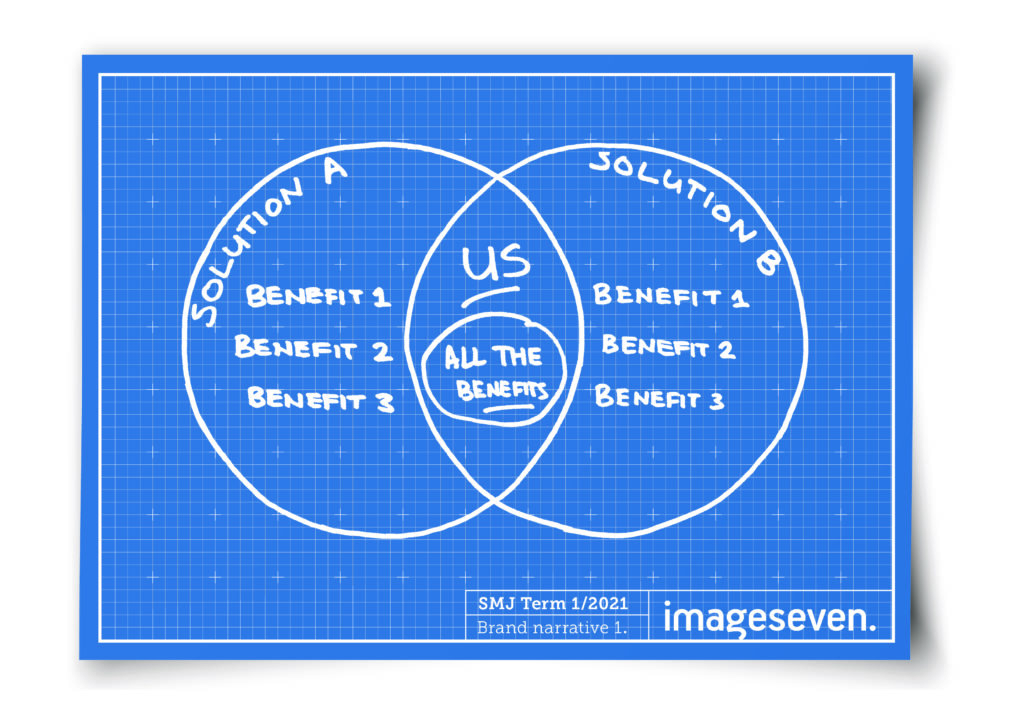
2. The new era
This is the perfect brand narrative for schools that have truly broken the shackles of traditional education — or at least parts of it — and offer a new solution that is purpose-built for changing times.
Here’s the logic progression:
- Once upon a time there was education solution A.
- But then the world changed, and A-type schools were not good enough.
- Then came education solution B.
- But then the world changed, and B-type schools were not good enough.
- Then came education solution C.
- C-type schools have been the standard until now, however …
- The world is changing in such a way that C-type schools won’t be good enough when your child graduates.
- Meet [insert your school], the key for your child’s success in a changing world.
Of course, you have to be able to substantiate your claim that you really are ahead of your competitor schools and that your offering is significantly different to what has gone before. You also need to have fundamentally changed the rules or assumptions of what has gone before. And then there is the risk of being, well, cringeworthy. If the groundbreaking improvements you have made are not clear and obvious to the prospective parent, your story may just come across as meaningless hype. The most successful implementations of the ‘new era’ story arc describe something unique and practical.

3. The niche school
Being small or focused doesn’t have to be a weakness. Frame your brand narrative in the right way and you can turn your domain expertise into a significant and unique advantage. Playing to your strength — the thing you’ve been focusing on for 25 or 125 years — makes you a specialist. What you don’t do is as important as what you do do.
Here’s the logic progression:
- Most schools offer a ‘one size fits all’ solution to education.
- At [insert your school], on the other hand, we only solve, and have only ever solved, your problem.
- Because of that, we have learned more about your problem than anyone else.
- Because of that, we have refined, developed and perfected our solutions to your specific problem.
- Because of that, we are best positioned to solve your problem for you and your child.
With the niche school brand narrative, it is important to get the balance right. Don’t talk down the generalist competitor that caters for ‘everyone’. Instead, focus on your niche. They are the prospects you understand. You know their problems and how they feel about those problems. You have already trod the path they seek to follow many times, and this makes you their ideal guide.
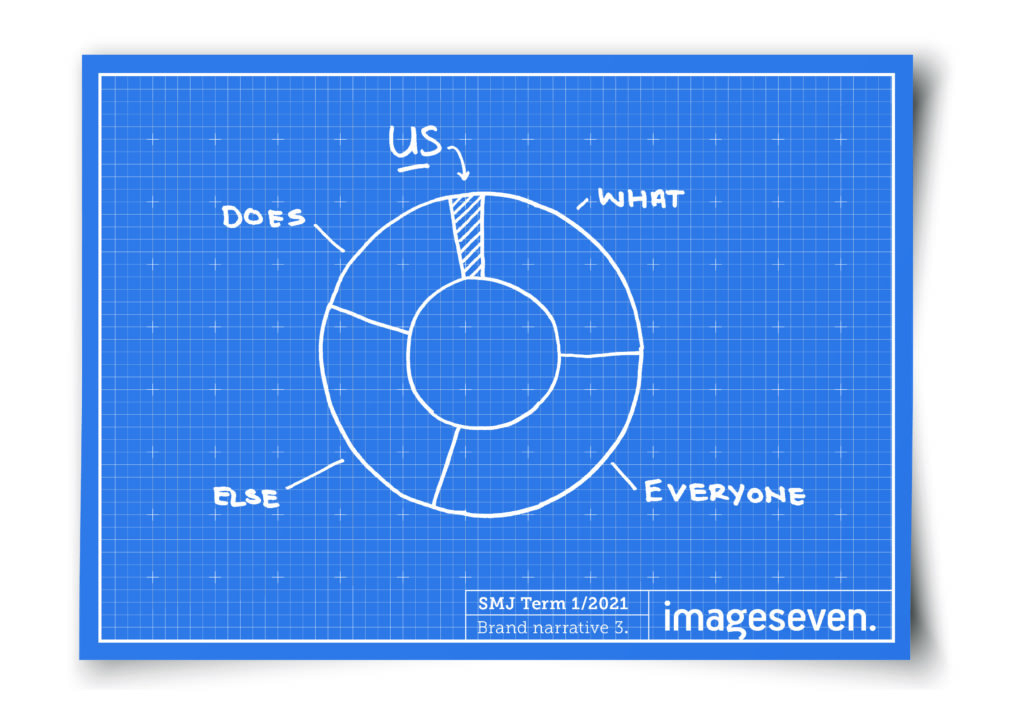
4. The better way
The ‘better way’ is built on the idea that prospective parents think they need to get to a specified end point in a particular way, but your school, unlike your competitors, sees a different way … a better way. You can see the student’s journey in a way that doesn’t simply keep parity with their peers across the state; you see an entirely different destination.
Here’s the logic progression:
- Most schools believe their task is to get your child from start point A to end point B.
- Naturally, you think you also need to help get your child to B.
- But what happens when you get to B?
- You end up in the same place as all the other students.
- What if you could get to somewhere better than B?
- Meet new end point C, the destination that offers your child a distinct advantage.
- And [insert your school] is the way to get your child from A to C.
Here’s another variation on the logic progression:
- Most schools believe their task is to get your child from A to B.
- Naturally, you think you also need to help get your child to B.
- But most schools have been so busy worrying about B, they have lost sight of the fact that what really matters is C; B was just assumed to be the best way to get to C.
- Meet [insert your school], the school that gets you straight to C.
The ‘better way’ brand narrative has an obvious difficulty in that it requires telling prospective parents that what they think they want from a school is either incorrect or off target. Of course, end point C must also be meaningfully different to end point B. The story does not work if C is just a slightly better version of B.
There are three critical steps to implementing this story arc:
- First — explain why the status quo isn’t good enough and that it doesn’t need to be that way.
- Second — explain why conventional wisdom still maintains end point B as a desirable destination.
- Third — explain why end point C is more than a ‘nice to have’; it is a must.
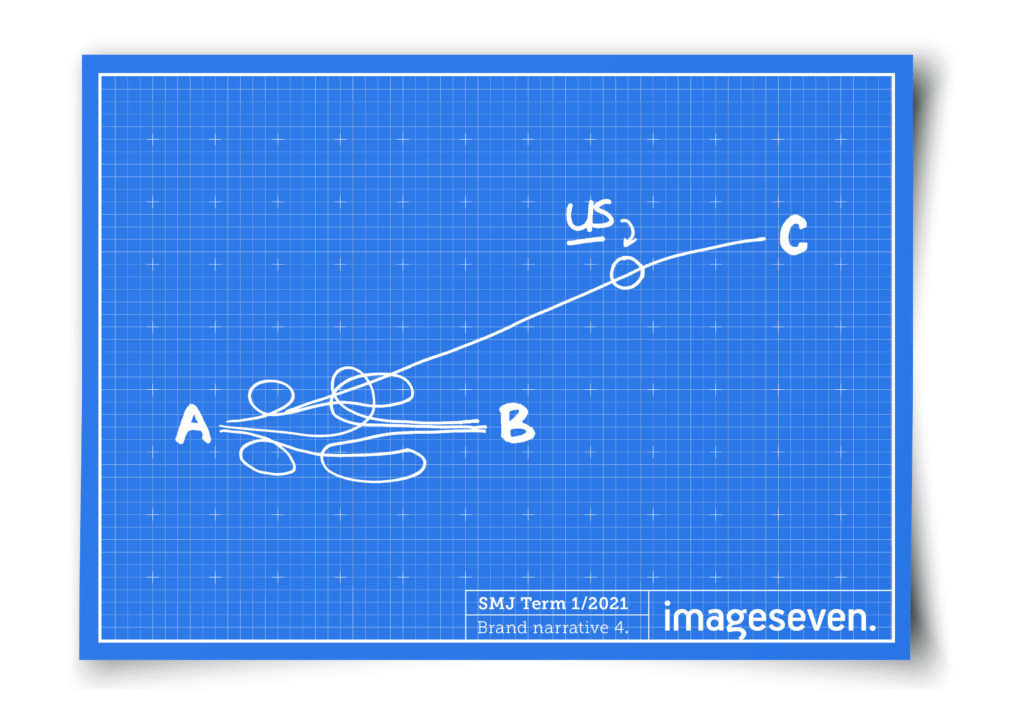
5. The frog in the saucepan
Not often used for schools, this brand narrative speaks to prospective parents who have had an issue with their child’s education for so long that they haven’t noticed the problem heating up. Sooner or later, the problem will heat up and become a crisis — one that risks the positive future success of their child.
Here’s the logic progression:
- Once, quite a while ago, you noticed a problem with your child’s current school, but you could work with or around it.
- Then the problem got bigger and had a greater impact, but you could work around it.
- Now the problem is huge, and you still work around it.
- But here’s what you don’t know — the moment this problem gets any larger or the longer it is allowed to continue, it will turn into a disaster from which it will be very hard to recover.
- Meet [insert your school], the solution that stops your problem escalating any further or eliminates the problem completely.
This story arc is usually — but not exclusively — suited to schools who have niche offerings, because convincing parents they need to be concerned and act on a crisis that hasn’t happened yet is hard. It is important to describe a clear and believable outline of the costs of inaction. This description needs to resonate with prospective parents who are clearly distracted by other urgent but less important priorities. When not well-crafted, the ‘frog in the saucepan’ story arc risks becoming a story of doom and gloom rather than a story of hope.
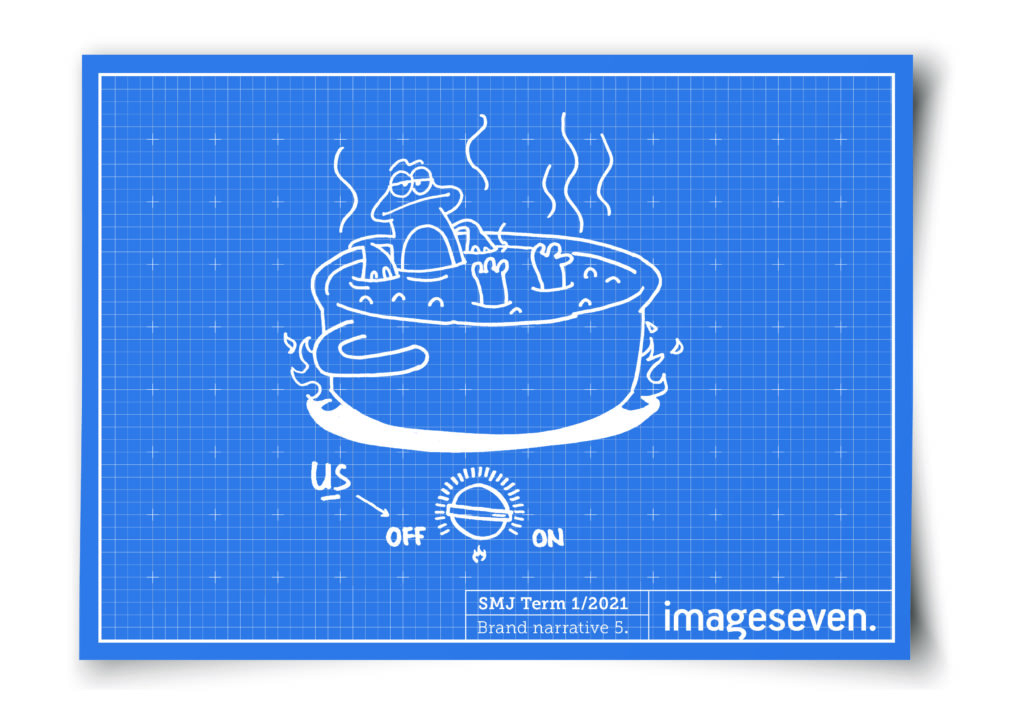
6. The fulfilled desire
In the school marketing space, it is easy for a prospective parent to find fault with a technical argument rather than one that revolves around moving them from ‘unhappy’ to ‘happy’ parents. This is one of the reasons why people-centred stories are so effective in a school context. They speak to the emotions and are highly relatable.
Here’s the logic progression:
- Alternative solutions A, B and C are all capable of solving your problem and they all have great features.
- But they forget a key element of success; parents (and students) have to enjoy the experience.
- This means that parents often reluctantly stick with solutions A, B or C for longer than is wise.
- Meet [insert your school], who solves the problem and provides an end user experience that is enjoyable for the whole family.
Although simple, this brand narrative can be tricky to execute in an authentic way and not cross the line into sounding manufactured or gushy. You must be able to substantiate your claim to deliver what prospective parents really want in a meaningfully different way.
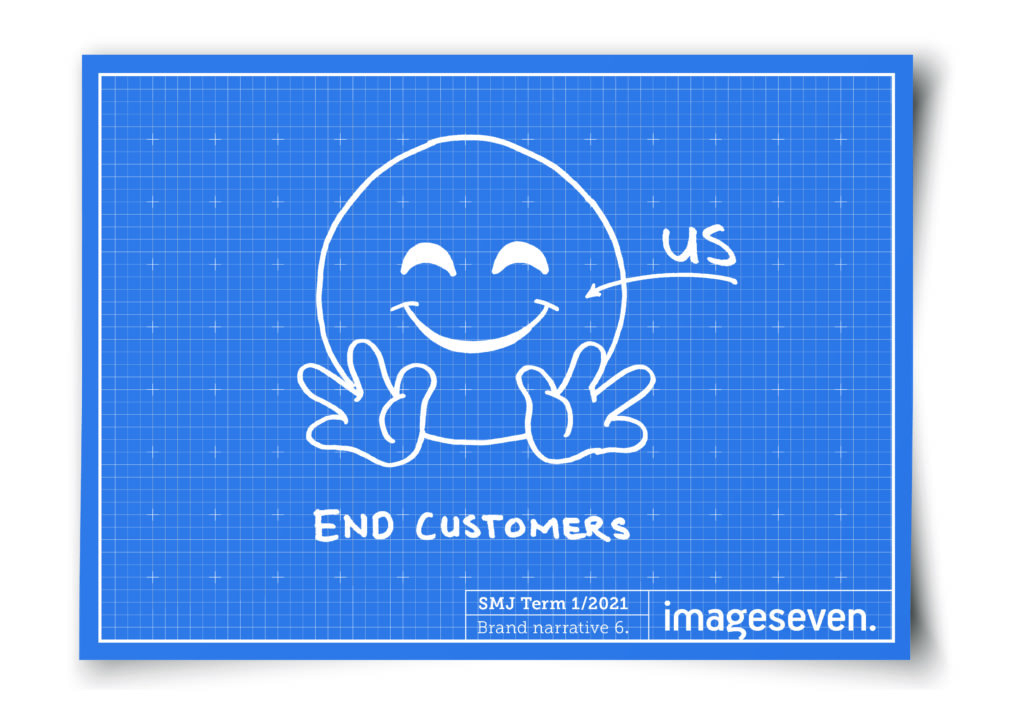
7. The ultimate toolbox
This brand narrative is about being able to deconstruct and reconfigure your school’s offering with a high degree of precision so you can solve prospective parents’ problems in a bespoke way.
Here’s the logic progression:
- Some parents choose school A.
- Some parents choose school B.
- But school A is actually an aggregate of [a1], [a2], [a3], [a4] and [a5].
- And school B is actually an aggregate of [b1], [b2], [b3], [b4] and [b5].
- But what if the best way to solve your problem is with [a1], [a3], [b2] and [b5]?
- Meet [insert your school], the only way to get the precision you need to solve the problems that are specific to your situation.
To use the ‘ultimate toolbox’ to its best effect, it is critical to explain how you will mix and match solutions and why your school is so uniquely placed to do so. If you don’t, the argument falls flat. A potential pitfall is that if your school has broad, exhaustive offerings, it has the potential to sound like a burden for prospective parents. They can fear that they will have to navigate through all the micro solutions themselves. It is useful to centre this brand narrative on support and simplicity.
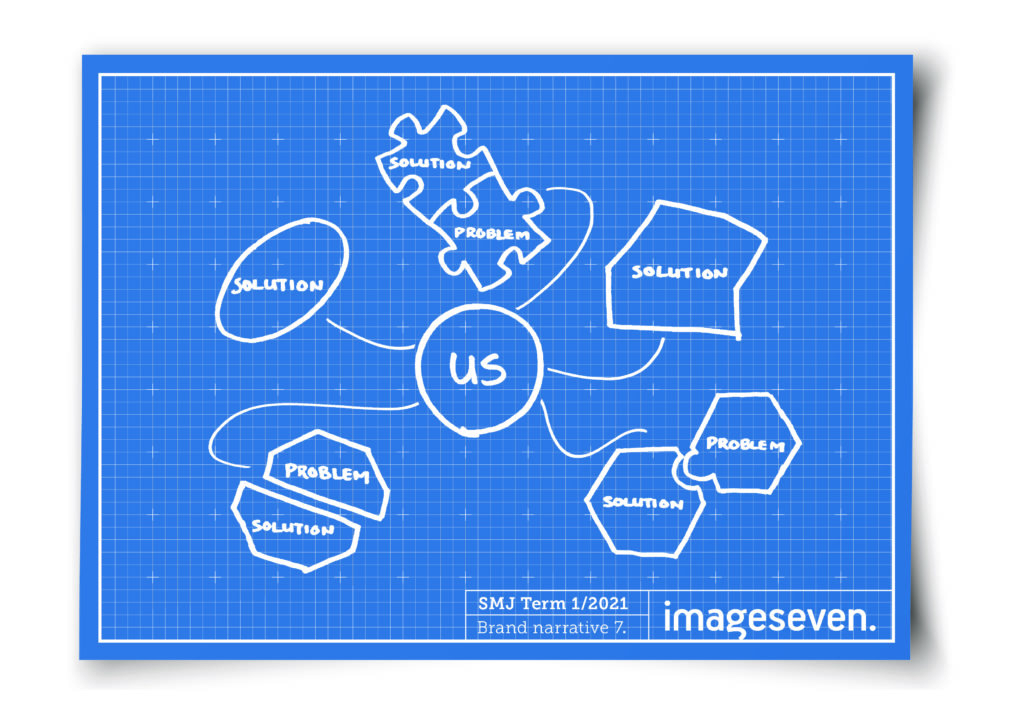
These seven school brand story arcs are the most common we have encountered. There are undoubtedly more in use. Which one reflects your school? If you are not clear about it, you have just identified an issue. If you are clear which one best reflects your school, do all the members of your school marketing team and school leadership share your clarity?
insight applied
- School brand narratives usually follow one of seven story arcs.
- Every brand narrative has upsides and downsides, and implementation in each school is different.
- Clarity about brand narrative creates a framework for messaging consistency.

Brad Entwistle is the Founding Partner of imageseven. Since 1990, he has led his team on a mission to amplify the impact of schools by working directly with school Heads, tailoring solutions to maximise their communication and marketing effectiveness. imageseven.com.au







